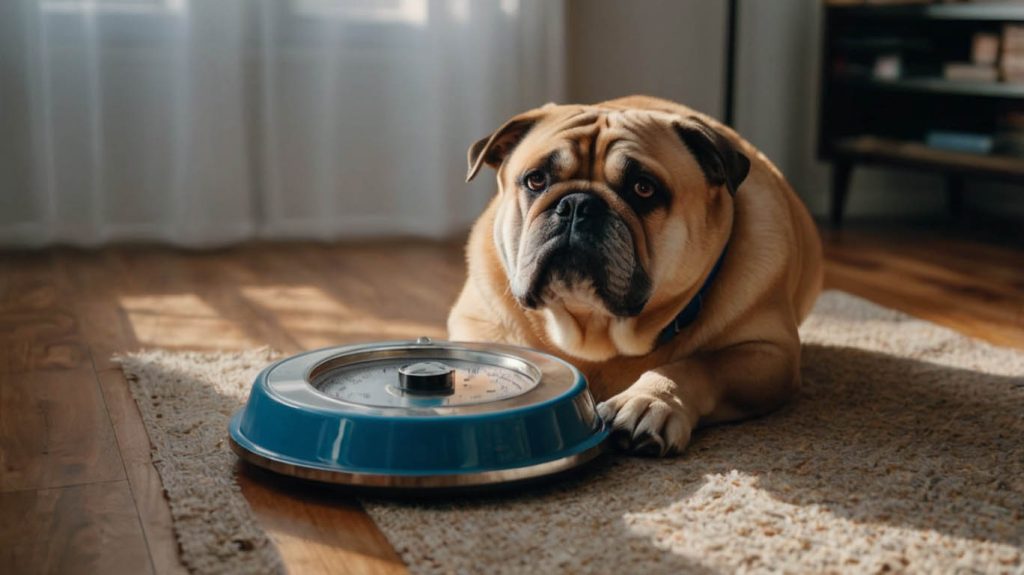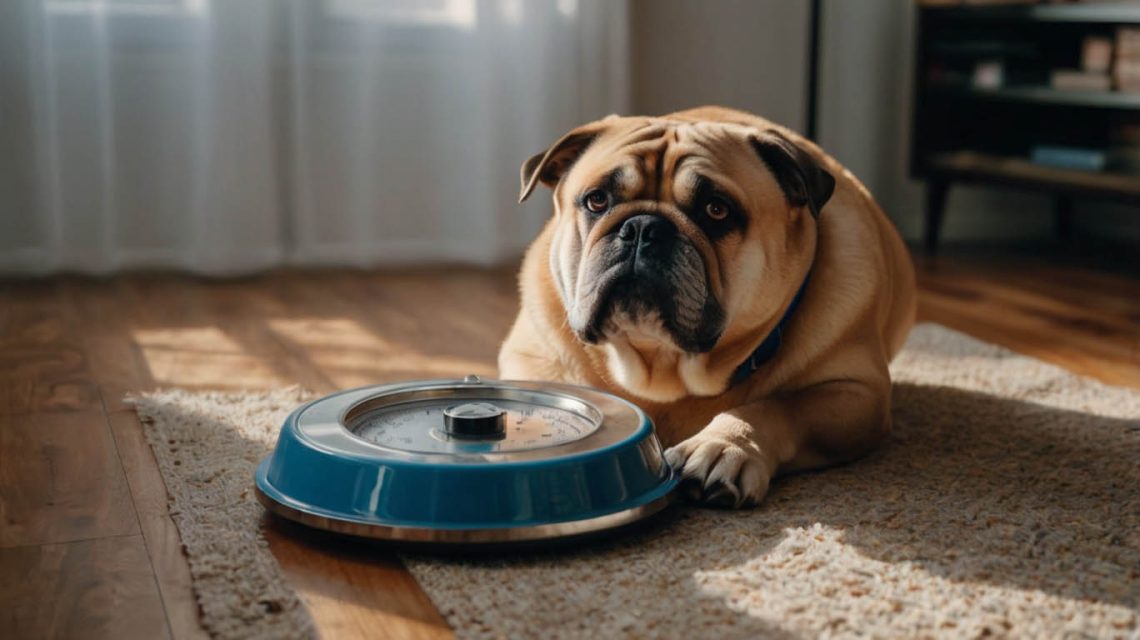How to Help an Overweight Dog Lose Weight: The Ultimate Guide for Pet Parents
It was a routine vet visit, but the words hit Mark like a ton of bricks. “Buddy is about 15 pounds overweight,” the vet said gently but firmly. Mark looked down at his beloved 7-year-old Labrador, who was happily accepting treats from the vet tech. He had always seen Buddy’s extra pounds as just being “well-loved.” However, the vet proceeded to explain the serious health risks: increased strain on his joints, a higher risk of diabetes, and a potentially shorter lifespan. Mark left the clinic that day with a new sense of purpose, determined to learn how to help an overweight dog lose weight.
Mark’s story is an incredibly common one. It’s estimated that over 50% of dogs in the United States are overweight or obese. We show our love through food and treats, and those extra pounds can creep on without us even realizing the danger.
Consequently, this definitive guide is designed to be your comprehensive action plan. We will walk you through the crucial first steps, explain the science of canine weight loss, and provide practical, sustainable strategies for diet and exercise. Therefore, you can move from a state of worry to one of empowered action and help your best friend live a longer, healthier, and happier life.

The Critical First Step: Partnering with Your Veterinarian
Before you make any changes, this is your non-negotiable first step. You must consult your veterinarian to create a safe and effective weight loss plan.
Your vet’s role is absolutely vital. They will:
- Determine an Ideal Body Weight: They will assess your dog’s body condition score and determine a healthy target weight.
- Rule Out Medical Causes: Sometimes, weight gain can be caused by an underlying medical condition like hypothyroidism or Cushing’s disease.
- Calculate Daily Calorie Needs: This is the most important part of the plan. Your vet will calculate the precise number of calories your dog needs per day to lose weight safely. A sudden, drastic cut in calories can be dangerous.
- Recommend a Diet: They can recommend a specific prescription weight-loss diet or help you choose an appropriate over-the-counter food.
Learning how to help an overweight dog lose weight is a team effort, and your vet is your most valuable teammate.
The Core of the Plan: How to Help an Overweight Dog Lose Weight Through Diet
Weight loss in dogs, just like in humans, boils down to a simple equation: calories in must be less than calories out. Diet is, by far, the most important part of this equation. You cannot out-exercise a bad diet.
Step 1: Precisely Measure Every Meal
This is where most owners go wrong. Using a generic scoop or “eyeballing” the amount of food can lead to overfeeding by as much as 25-50%.
- What to do: Use a kitchen scale or a proper measuring cup to measure out the exact amount of food your vet recommended for each meal. This level of precision is crucial for success.
Step 2: Eliminate All Table Scraps and High-Calorie Treats
This can be the hardest part, but it’s essential. Those little bites of cheese, crusts of toast, and licks of peanut butter add up incredibly fast.
- The 10% Rule: All treats (including healthy ones) should make up no more than 10% of your dog’s total daily calorie allowance.
- Swap for Healthy Alternatives: Instead of high-calorie biscuits, use low-calorie treats. Dog-safe vegetables like baby carrots, green beans, or cucumber slices are fantastic, crunchy, low-calorie options.
Step 3: Consider a Prescription or Weight Management Dog Food
While you can achieve weight loss by simply reducing the portion size of their current food, a specially formulated weight management diet can make the process much easier and healthier.
- How they work: These foods are specifically designed to be lower in calories and fat but higher in fiber and protein. The extra fiber helps your dog feel full and satisfied, while the high protein helps them maintain lean muscle mass as they lose fat. This is a key strategy for how to help an overweight dog lose weight without them feeling constantly hungry.

Adding Movement: How to Help an Overweight Dog Lose Weight with Exercise
Once the diet is under control, you can focus on safely increasing their calorie output through exercise.
Start Slow and Be Consistent
If your dog has been sedentary, do not jump into long, strenuous workouts. This can cause injury, especially to their already-strained joints.
- The Power of the Walk: The best exercise for most overweight dogs is a consistent, brisk walk. Start with short, 15-20 minute walks twice a day. As their stamina improves, you can gradually increase the duration and pace.
- Consistency is Key: A 20-minute walk every single day is far more effective than a 2-hour hike once a week.
Make Exercise Fun and Engaging
- Swimming: If you have access to a safe body of water, swimming is a fantastic, low-impact exercise that is very easy on the joints.
- Indoor Games: On bad weather days, play gentle games of fetch down a hallway or use puzzle toys and food-dispensing toys. These not only burn calories but also provide crucial mental stimulation.
Monitoring Progress and Staying Motivated
Losing weight is a marathon, not a sprint. Safe weight loss for a dog is typically 1-2% of their body weight per week.
- Regular Weigh-ins: Use your vet’s scale for accurate monthly weigh-ins to track progress.
- Take “Before” and “After” Photos: Seeing the physical changes can be a huge motivator.
- Focus on “Non-Scale Victories”: Celebrate when your dog has more energy, can jump on the couch more easily, or when you can finally feel their ribs again. These are all signs that your plan is working.
A Case Study Resolved: How Mark and Buddy Got Their Health Back
Let’s return to Mark and his lovable Lab, Buddy. Armed with a plan from his vet, Mark started a new routine. He bought a kitchen scale and began measuring Buddy’s new prescription diet food precisely for every meal. He replaced the cheesy treats with baby carrots, which Buddy surprisingly loved.
He also committed to two 25-minute walks every day, rain or shine. It was challenging at first, and Buddy was slow. But Mark was patient. After a month, Buddy had lost 3 pounds. After six months, he had lost the full 15 pounds and reached his ideal weight. The change was incredible. Buddy had more energy than he’d had in years, he was more playful, and he no longer struggled to get up. Mark had successfully learned how to help an overweight dog lose weight, and in doing so, had given his best friend the gift of a healthier, more comfortable life.
The Final Verdict: A Gift of Health and Longevity
Learning how to help an overweight dog lose weight is one of the most loving and important things you can do for your pet. It requires dedication, precision, and a partnership with your veterinarian, but the rewards are immeasurable. A leaner dog is a healthier dog, with less pain, more energy, and the potential for more happy years by your side.
Don’t wait. If you think your dog might be overweight, schedule an appointment with your veterinarian today. Creating a weight loss plan is the first step on a journey to a longer, healthier life for your beloved companion. What are your biggest challenges with your dog’s weight? Share your stories and questions in the comments below!


